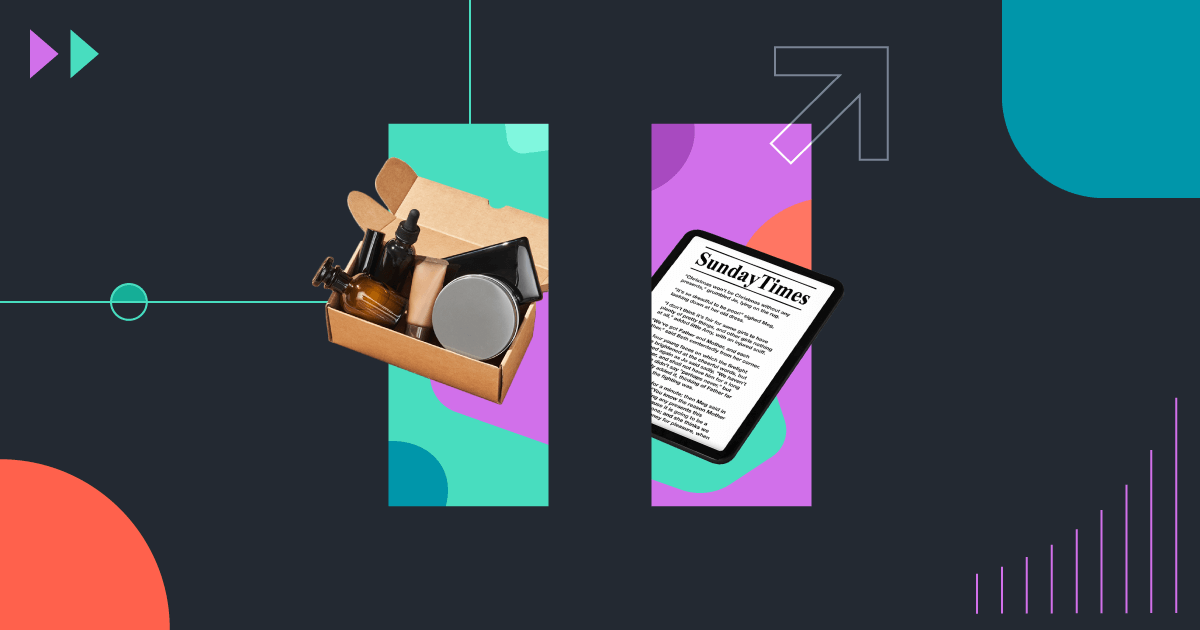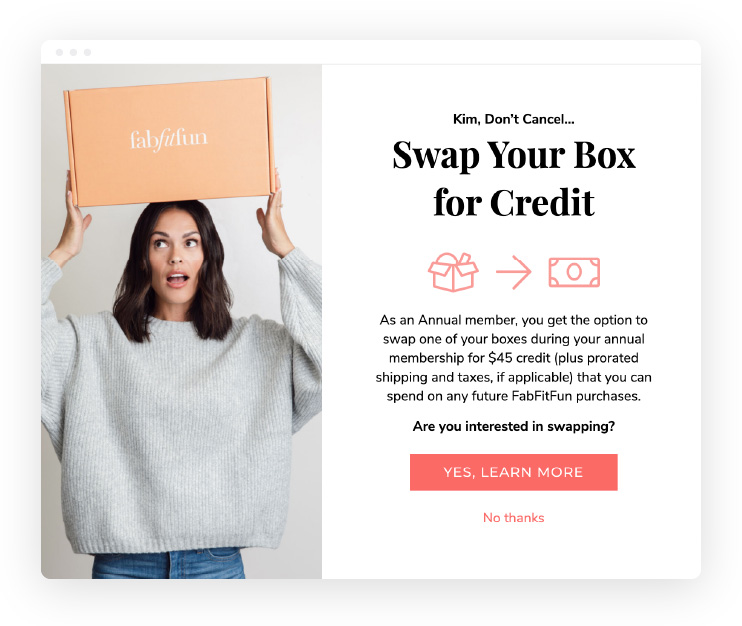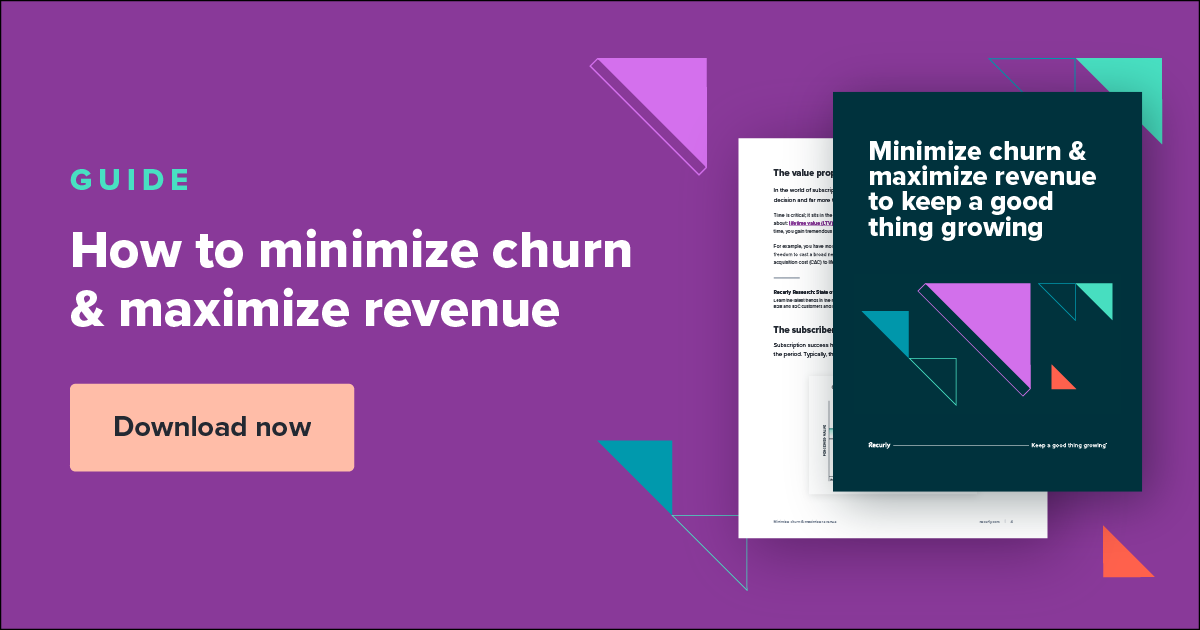Pause subscriptions: A powerful retention tactic

Subscriptions are a top driver of loyalty and revenue growth for brands looking to grow. However, there comes a time when consumers may consider canceling their subscriptions. In fact, our survey report states that 31% of U.S. consumers say they plan to cancel some subscription services this year–after 46% canceled a subscription due to price increases in the last year.
While canceling should always be an option, you can entice subscribers to stick around longer. In this article, we'll discuss why pausing subscriptions is a powerful tactic that leads to real customer retention.
What is customer retention?
Customer retention is the business practice of holding onto the customers you have because getting a current customer to buy again is faster, cheaper, and easier than landing a new customer. It's all the tactics and strategies of making loyal customers out of your current customer base. It's the reward programs, referral programs, and inside marketing strategies your business uses to turn a bad experience into a successful customer relationship.
Customer acquisition cost is one of those business metrics that you shouldn't expect to drop any time soon. From ecommerce subscription-based businesses to brick-and-mortar banks, the cost of getting a new customer is on the rise. And what are your business's specific retention efforts? If your business runs on monthly subscriptions, you can study how many customers cancel their subscriptions in a month, as in your customer churn rate.
Customer retention practices are also more specific than doubling down on excellent customer service. After a customer's initial purchase, they'll make a dozen different actions in their customer journey. Real customer retention strategies connect the metrics analyzing why a customer churns to specific tactics your business and platform can use to keep the customer relationship in motion.
Learning the motivations and preferences behind subscriptions is how you discover why a customer may decide to churn, or cancel their membership. Also, the 2020 pandemic paved the way for changing customer expectations, which is the main driving force behind the direct-to-consumer (DTC) shift. One part of those bringing new values, buying behaviors, and demands is the use of subscriptions as a way to treat themselves. In that light, you can imagine plenty of reasons a consumer may wish to end their membership. Fortunately, you don't have to guess. That's what business analyses and market research are for.
In 2022, the top three reasons users said they canceled a membership were:
Price increases and inflationary concerns
The subscription is no longer in use
Consumers found a better competitor offering
While blunt, these findings show a true opportunity to build customer loyalty. In short, businesses can boost their customer retention rates in three moves:
Offer a little bit of flexibility
Personalize their experiences
Apply customer feedback to your retention marketing
You're fortunate as a subscription business. You get so much customer feedback that you can study specific steps your business needs to take. You can actually develop a personalized customer experience that keeps the greatest percentage of customers around for the longest time. You've got several key metrics you can study over any period of time, including customer churn rate and retention rate. So put your insights and metrics to work. That's customer retention.
However, one of the most important tools in your customer retention strategies is the one right beside your business's exit sign.
Namely, the pause subscription button.
How to keep your customers by showing them the pause subscription button
You may ask, "Wait, you want me to build a function into our business that actually helps customers stop using our services?"
Yes. It may seem counterintuitive, especially if you have a specific (and let's face it, outdated) understanding of customer loyalty. One that says a loyal customer chooses your product, uses it without question or modification, and asks for more. That may have made sense in the 1970s. However, in 2022, that's a formula for a truly low customer retention rate.
That's just not how most users and consumers interact with their products. Today's consumer gives feedback. They interact with businesses. They're vocal with customer feedback. A customer loyalty program rewards behaviors for challenging the products. The modern subscription service user expects an amount of back-and-forth. Especially with services they love.
Therefore, subscription brands like yours must satisfy a customer's needs thoughtfully, consistently, and with personalization in mind.
This brings us back to that pause button.
Personalized service means adjusting to your subscribers' needs. Reread the reasons behind canceling a subscription, and between the lines, you may see a customer experiencing pressures and needing to make choices in a sea of change. Your business needs to provide alternatives to outright canceling. Stay rigid and inflexible, and you may lose more than customer satisfaction. You could lose fans.
Give your customers the ability to pause their subscription, instead, and you'll keep them in your fold.
And there are a few other benefits, too.

Pausing subscriptions with Recurly
Why the pause subscirption feature makes sense
Offer a pause button to your subscribers, and you'll reap a host of other benefits. The most obvious one, well, is that they didn't cancel. Instead of losing an unhappy customer, you still have a subscriber that could easily turn into an active subscription again. Not all customers face the same challenges in the same billing cycle. They may leave rave customer reviews, but a surprise expense or unforeseen family situation can lead to that customer voluntarily churning. Unless you have the pause button.
Then, their subscription goes dormant until they're ready to reactivate. All the while, you're keeping the customer relationship going.
Before going into some of the real dollars-and-sense benefits, it's worth pointing out this soft benefit. The pause function itself serves as social proof that your business is willing to go the extra mile to personalize every step of its customer journey. Any company can put the word "personalization" and "flexible solution" on their website, but when you choose to use a pause button, you're actually demonstrating a commitment to customer success over monthly subscriptions.
One more benefit: Pausing subscriptions reduces your marketing costs. It's a myth to think a paused subscription hurts a subscriber's revenue. Instead, you get cost savings on your marketing dollars while avoiding voluntary churn.
Offering subscription pauses also gives you a longer customer journey. Now, instead of a binary experience where your business divides individuals into "customers" or "not customers", paused subscriptions create new stages in the customer's lifetime. Now, you have at-risk customers, customers who are responding to your customer retention programs, and customers you can win back with the right offering. There's so much your customer success team can do with paused subscribers. And you may win back more than you expect, like the team at Userlike did.
The pause functionality can also give us a sign that they didn’t cancel, but something else might be up so we can proactively reach out to learn more and help them through any challenges.
– Pascal van Opzeeland, Userlike Marketing Director.
Learn how Userlike retained 20% of at-risk subscribers with Recurly's pause feature.
Also, a paused customer still has direct ties to your business. They may not be paying monthly subscription fees, but that doesn't mean they don't have an emotional connection to your subscription business. Send them customer surveys. Ask for customer reviews. Reward them via your referral program when they send you new subscribers.
Implementing a pause button is crucial to your subscription business's long-term success. By providing options and flexibility, you allow subscribers to address their immediate needs, such as reducing costs, while protecting your recurring revenue.
All the while, your business keeps the door open.
How it works to pause a subscription & best practices to do it well
Now that you know why pausing a subscription is important for retention and reducing voluntary churn, we'll explain how pausing a subscription works.
When your user pauses their subscription, it's common practice for your user to keep their customer profile data intact, including pay preferences and other personalization choices they've made.
It's also common to allow some access, even though it's noticeably limited access, to the customer side of your service, website, or platform.
From a business analytics side, it may be useful to consider these subscriptions "dormant" as opposed to "active subscriptions."
The exact mechanics will depend on your business's requirements and marketplace expectations. Now, just offering a pause subscription button can yield the benefits above. However, there are smart design and business decisions that can actually make the pause button a successful part of your customer retention program.
It's all about how you say it.
FabFitFun does an excellent job with pauses. When a subscriber expresses intent to cancel their subscription, they provide friendly and helpful messaging and options.
Typical web design may say "give a user what they expect when they push a button." Instead, one best practice is to buck that advice for the "cancel subscription" button. Here's what happens when a FabFitFun user clicks "cancel subscription."

Instead of a message focused on the cancellation, FabFitFun reminds users of a store credit option available to users. The flexibility of the option (including prorated shipping and taxes) shows the business is interested in more than a simple annual membership fee.
Instead, FabFitFun cares about finding a better option. Maybe a store credit for a purchase is what the user needs more than a twelfth box. The point of this user experience detour is to find out.

A second best practice is using design choices to reflect defaults toward keeping the most access to your service.
Notice in the second image that the call-to-action (CTA) to “keep subscription” is highlighted instead of the cancel option. The brand also places the “keep subscription” CTA first on the left, as people read from left to right.
These web design choices are intentional efforts to try to retain the subscriber.
Subscription schedules and how pausing affects them
Whether annual or monthly subscriptions, it's common practice for customer subscriptions (and access) to pause at the end of their current billing period. Meanwhile, the subscription remains active.
Your customer service team should spend extra time studying customer behavior in that window of time. What do your subscribers do before the end of their billing cycle? Just as customer complaints give you valuable feedback, these signals teach your business a lot about your market, your product, and your specific offering.
Perhaps the billing cycle is too short for your market and industry.
Annual subscriptions with a discount are a popular time period for this reason. Weekly renewals put the average consumer into the choice too often. Then again, a monthly time period can put your service in the same share of wallet as other monthly necessities, such as food or rent.
In either case, prepaid memberships make life easier for your accounting and finance teams. No prorating refunds, issuing credits for unused time, no mid-cycle changes.
When they ask "What happens after I pause my subscription?"
Limit the subscription access, but do not cut it off. Remember, you need to keep your foot in the door so your customers pay attention to the business. After all, customers ask this question because they like your service. After all, subscriptions are mostly prepaid. They're not asking because they want to cancel.
They want to keep your subscription but factors outside of your relationship with them are interfering.
Create a trackable gate or clickable action.
You and your customer success team need to understand how many of your customers fall into the camp of "customer-facing pressure" instead of "customers falling out of love with our service." The retention strategy is different for customers who need a flexible option for a limited time period instead of finding which features would re-entice a customer back to you.
Pausing a subscription works by creating a personalized experience. Keep your business curious about your customers, especially at this phase. When they pause the subscription, your customer is looking ahead to restarting it as much as you are.
Lay a path to restart payments for a paused subscription
Winning back these customers is cheaper than capturing new customers.
If you've kept the relationship active while the subscription went dormant, the re-entry costs can get even more profitable.
Take the lessons you applied to onboard customers and apply them here. When your customer signals that they're ready to begin, make sure your business communicates clearly all the benefits they're about to re-enjoy. And any new developments they missed.
Keep renewal discounts upfront.
Scale them to match the barriers to entry.
Build trust and remind the customer that they are managing their own subscription. You and your business are merely there as a welcome guide back to the services and products they already love.
Let subscribers press pause while you keep the relationship active
Subscriber acquisition is just the beginning of a long-term relationship, and it’s your job to increase subscriber lifetime value with thoughtful growth strategies that create a meaningful experience.
Providing an excellent customer experience is paramount for any business looking to retain subscribers in today's competitive landscape. Offering flexibility and cancelation alternatives is one of the most meaningful ways to do exactly that.
Check out this guide with proven strategies to help you minimize churn and maximize subscription revenue.


